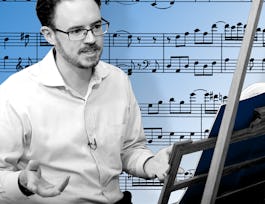Welcome to Part 2 of Exploring Beethoven's Piano Sonatas!
I'm delighted to launch another set of new lectures of this course as Part 2. As before, this class is meant for people of all levels of experience with Beethoven's music (including no experience at all!). Remember that you are able to watch the lectures as many times as you like, at whatever pace is comfortable for you. As I’ve done with the first set of Beethoven lectures, I look forward to meeting with students—online and in person, in various cities. The dates and locations will be posted in the Announcements and Events section, as part of the course content. So please remember to check back there for details. In these four new lectures, we will explore the following sonatas: • Sonata Op. 2, No. 3 • Sonata Op. 13 (“Pathetique”) • Sonata Op. 53 (“Waldstein”) • Sonata Op. 90 The Dolfinger-McMahon Foundation supports Curtis’s lifelong learning initiatives.














